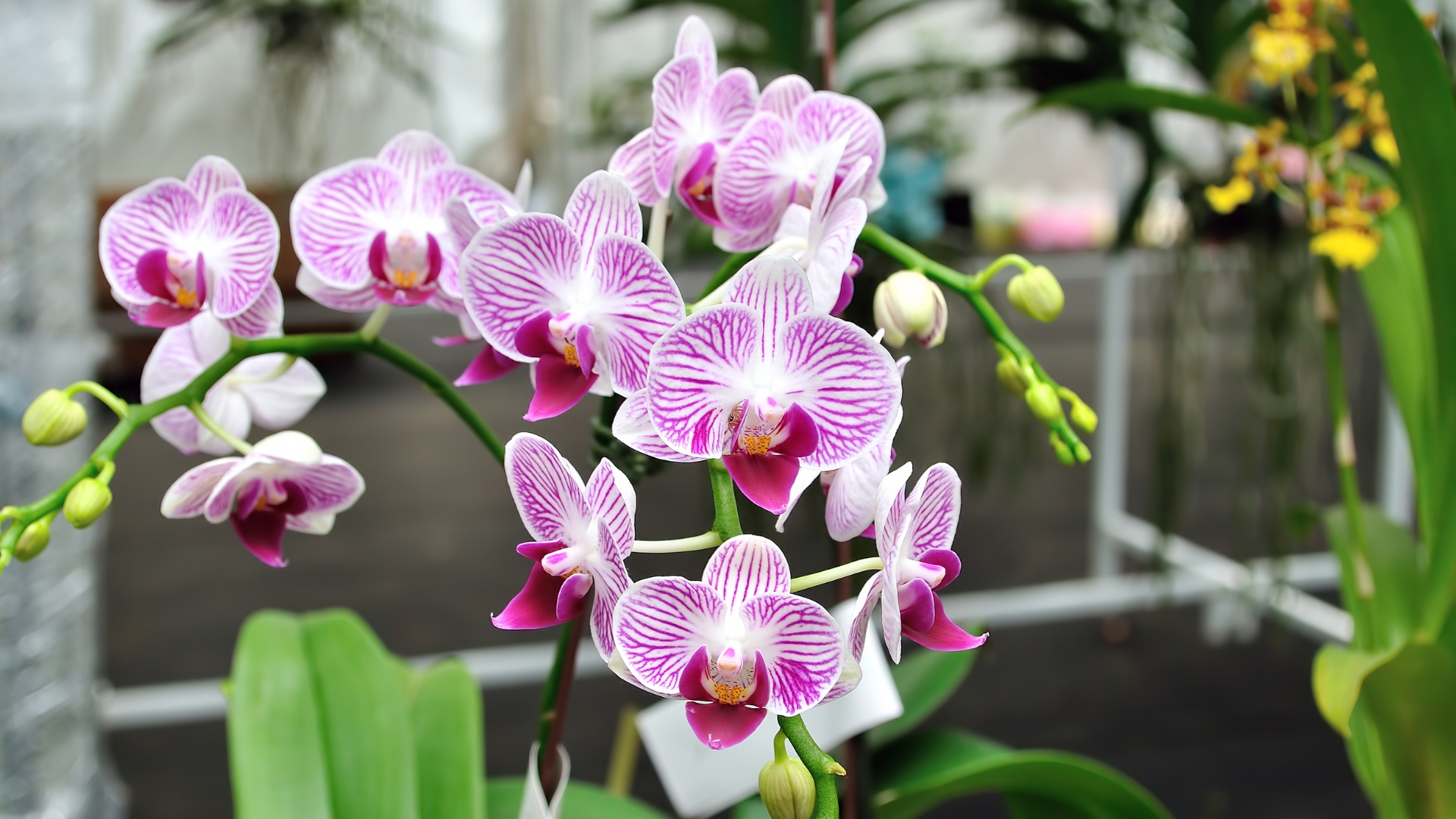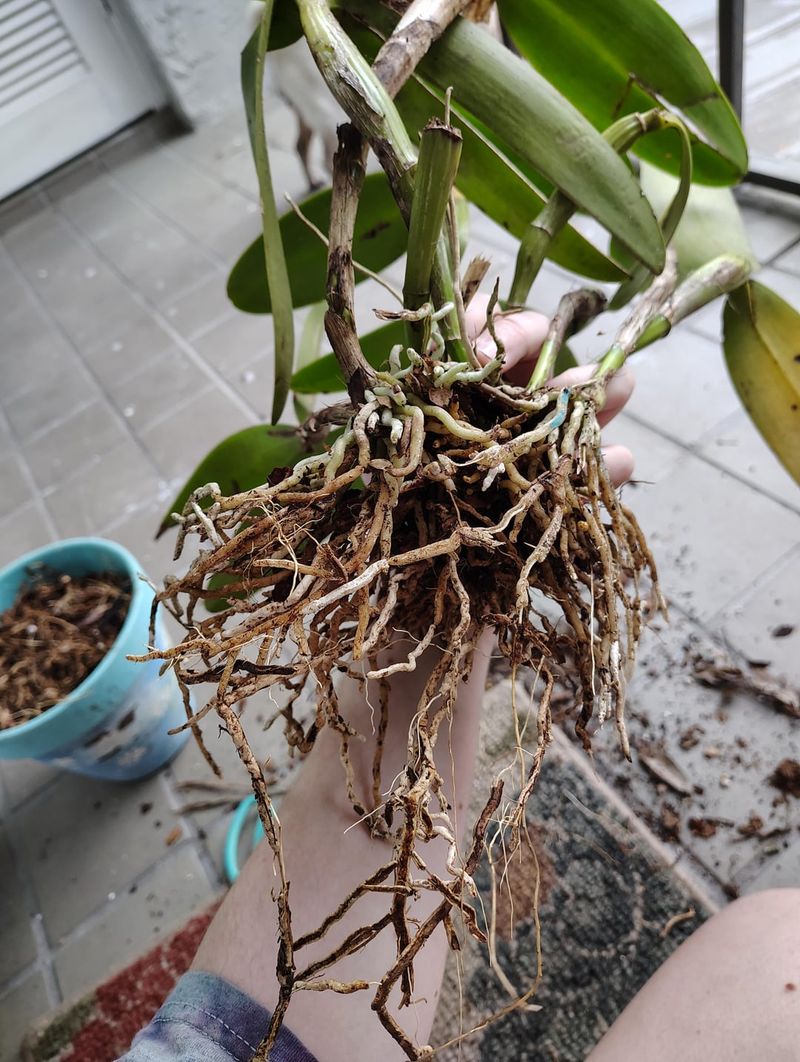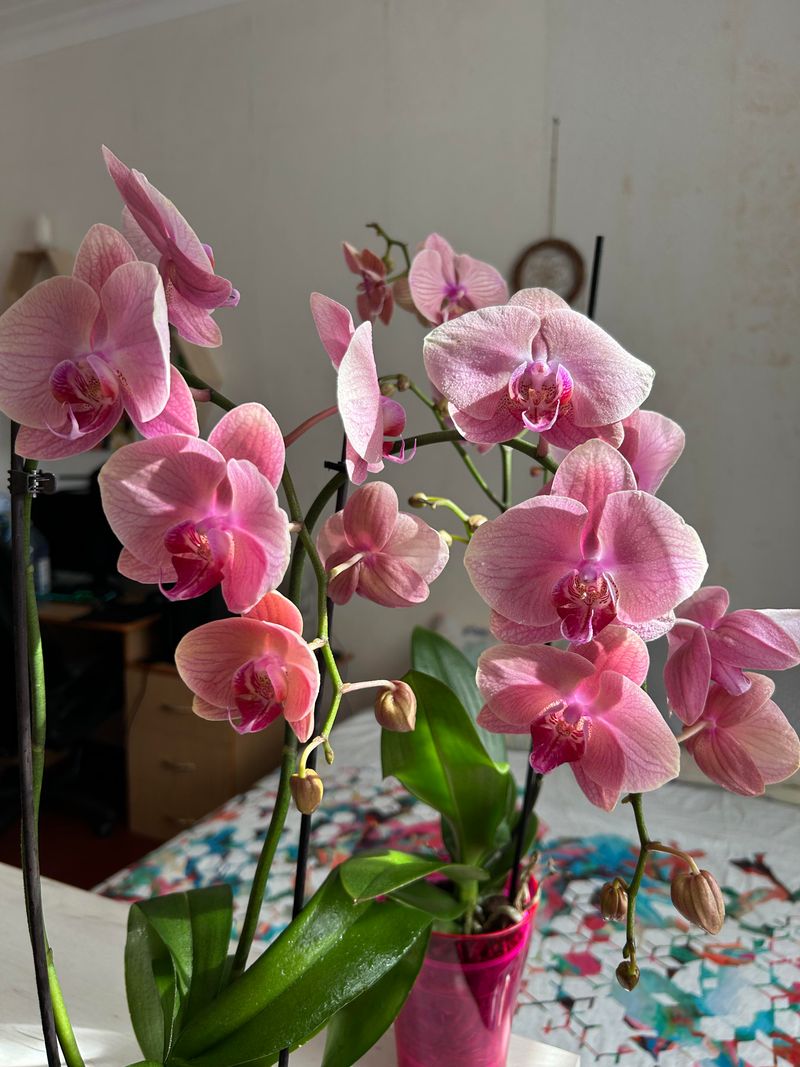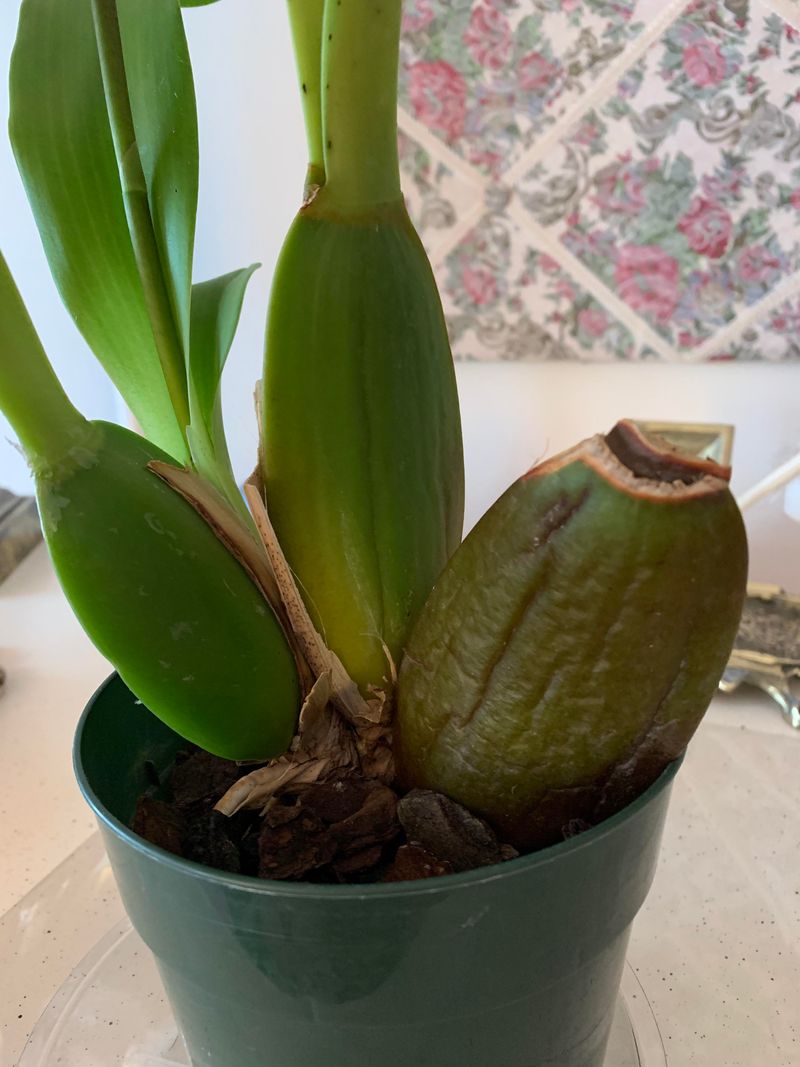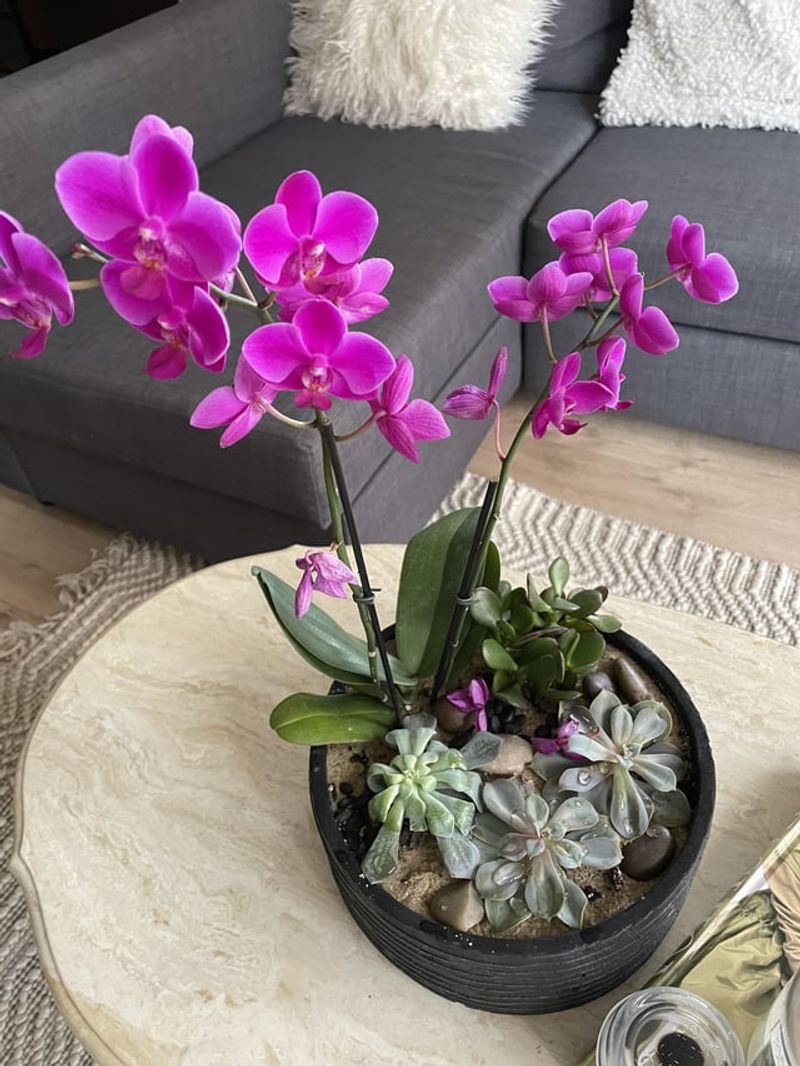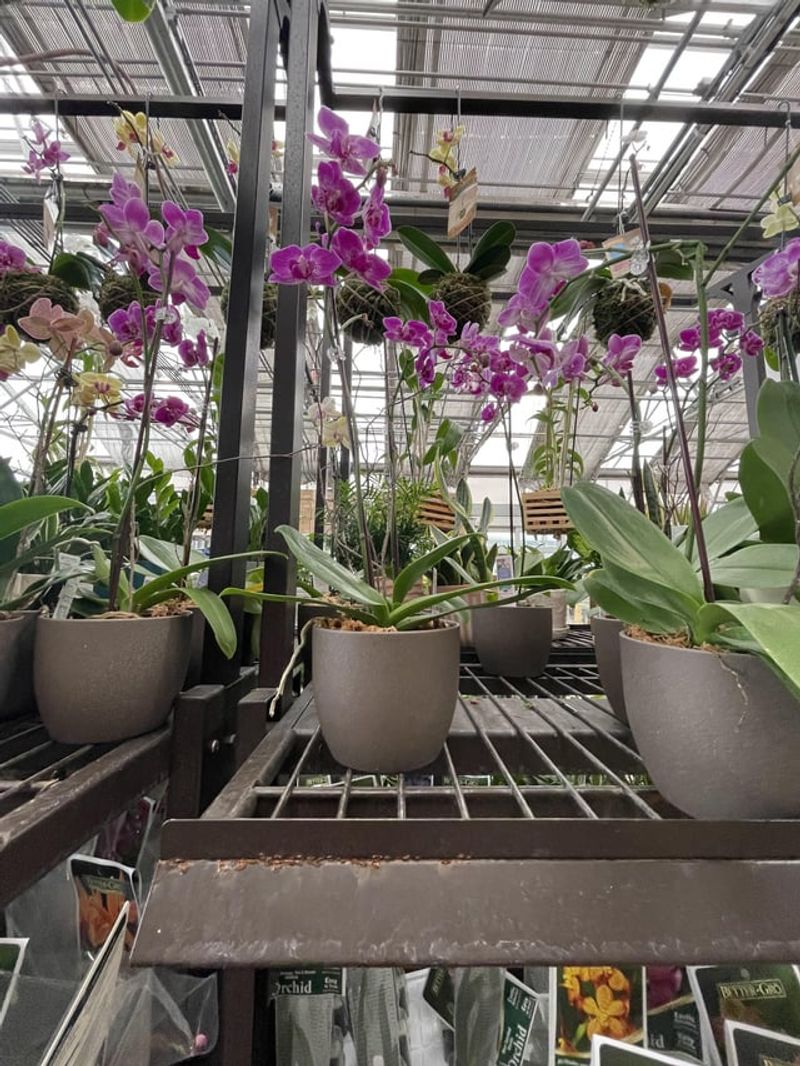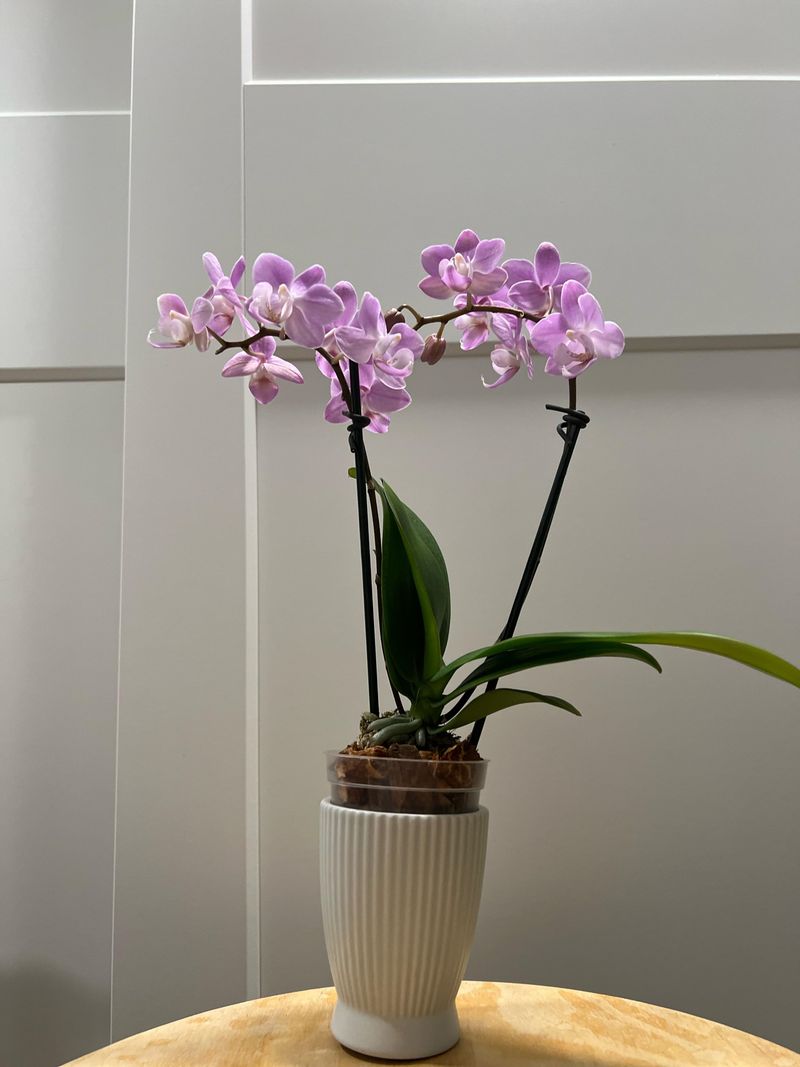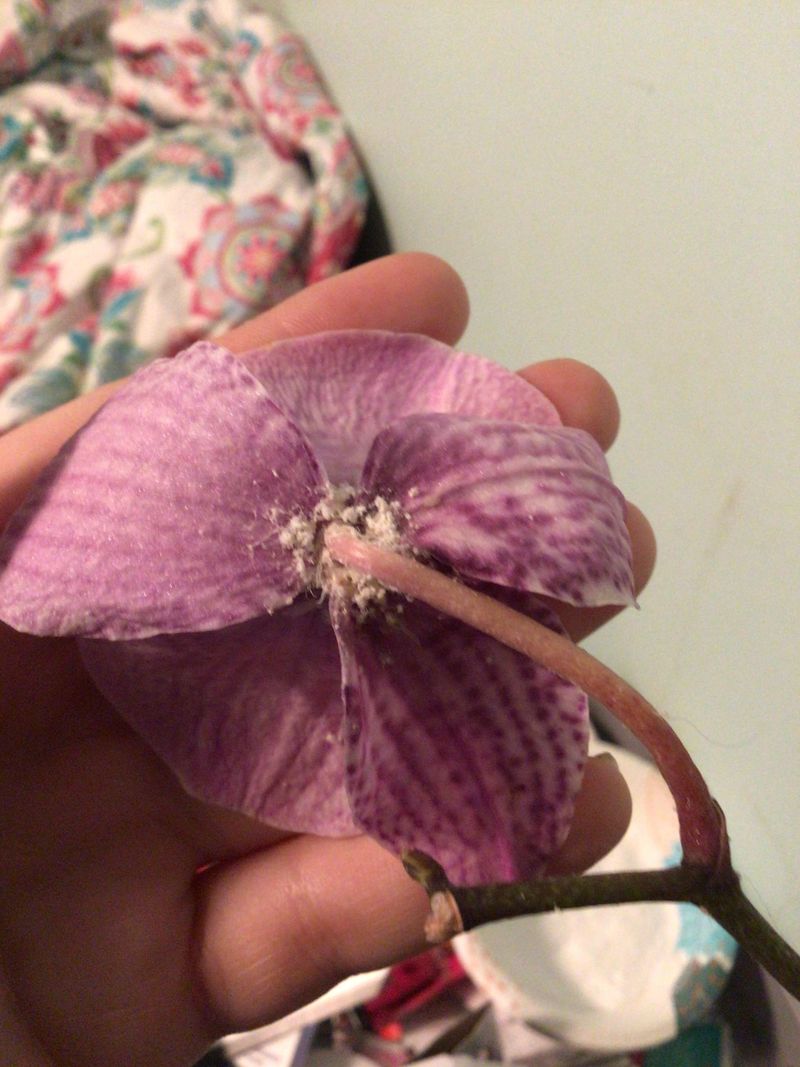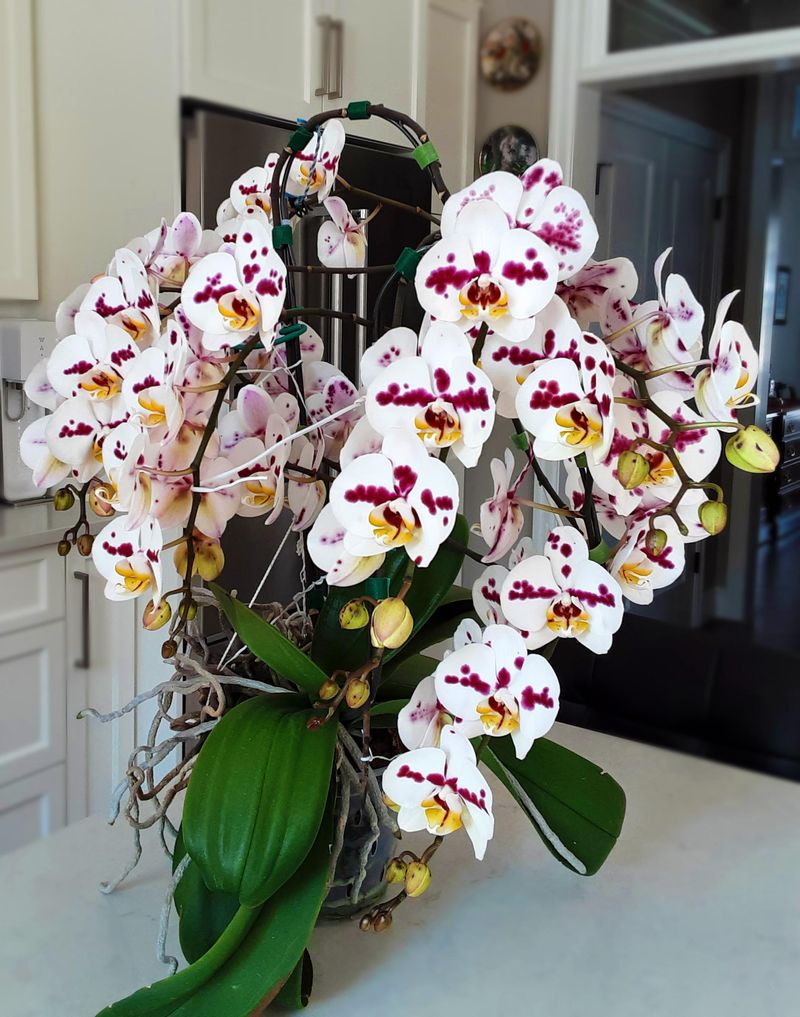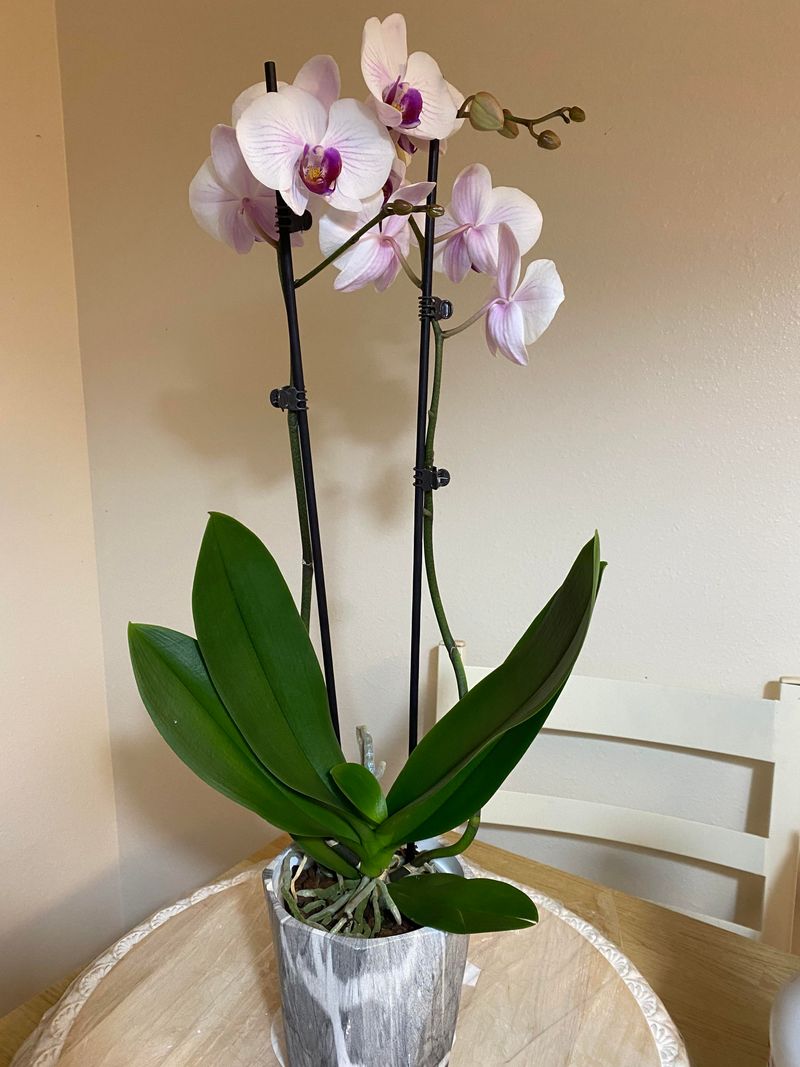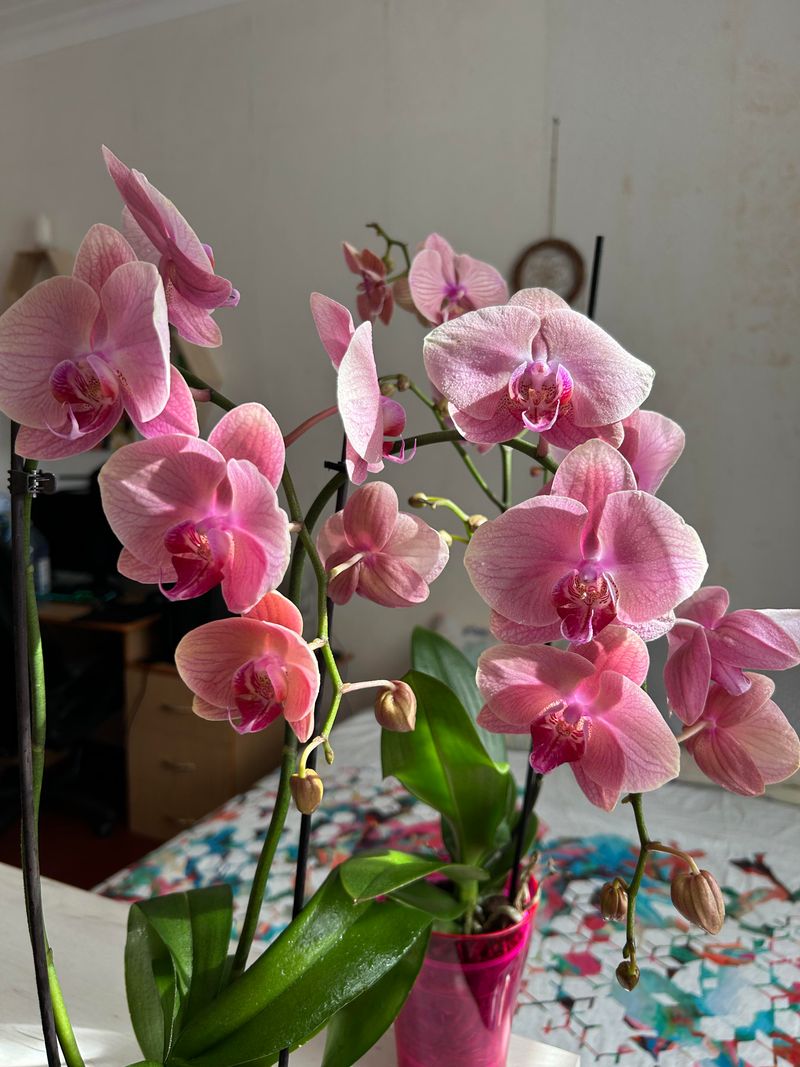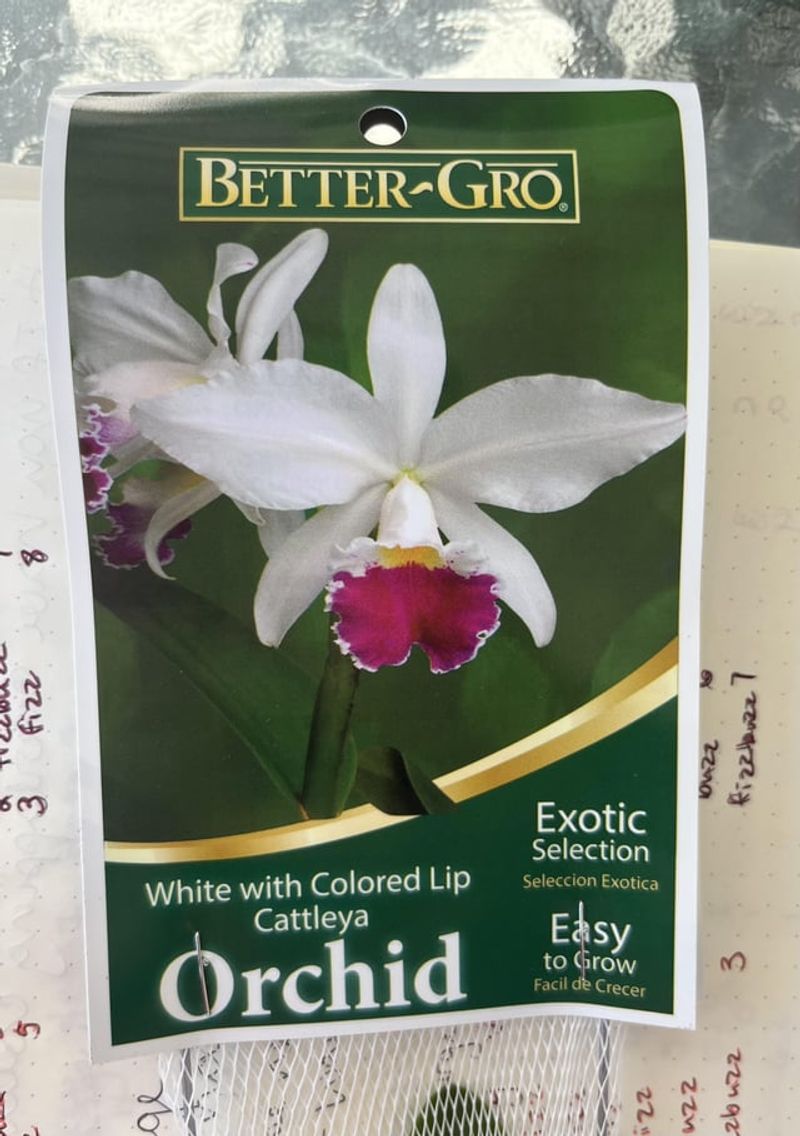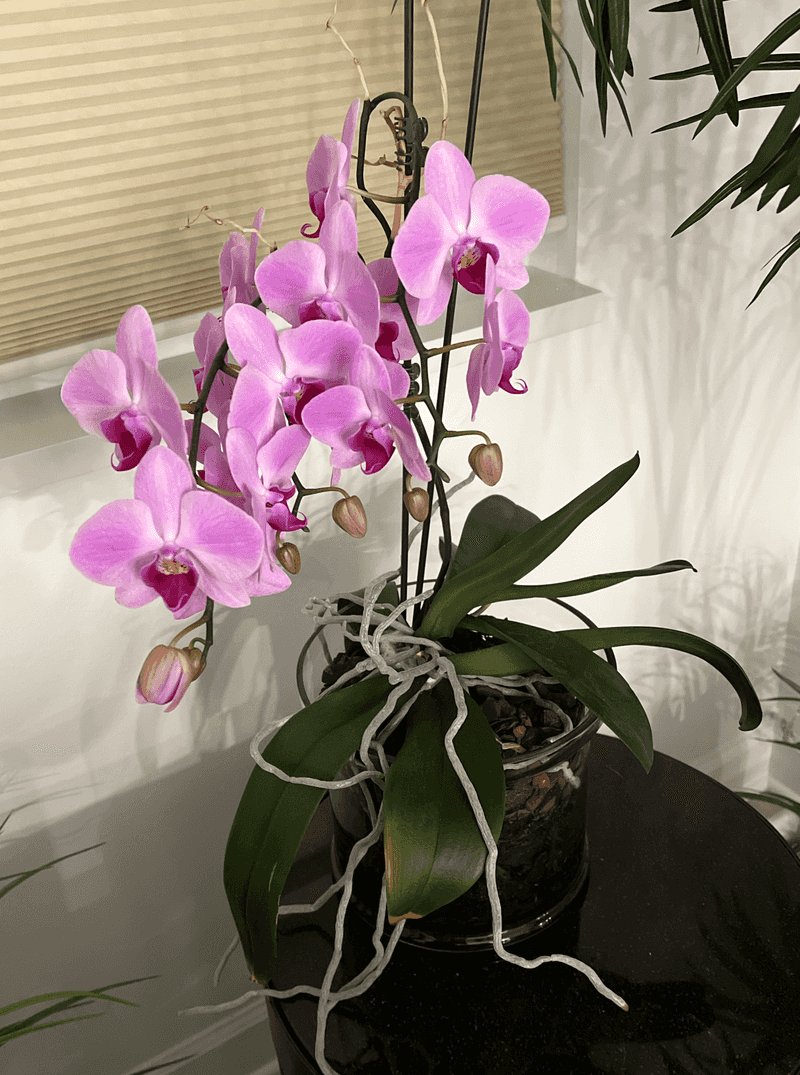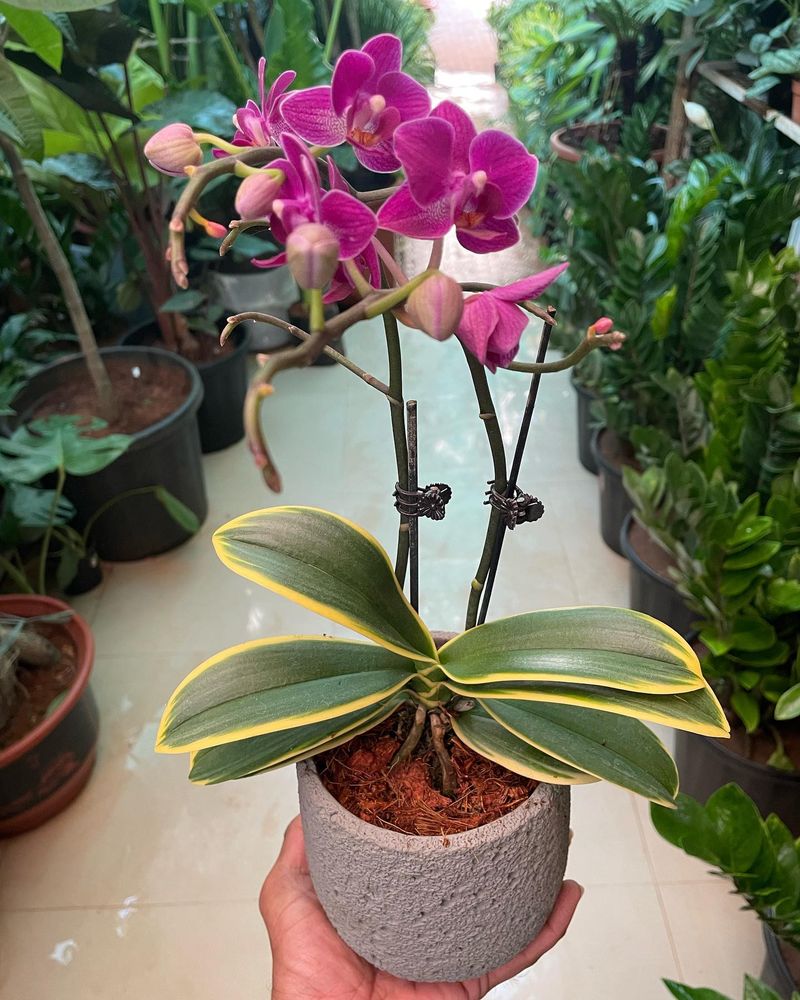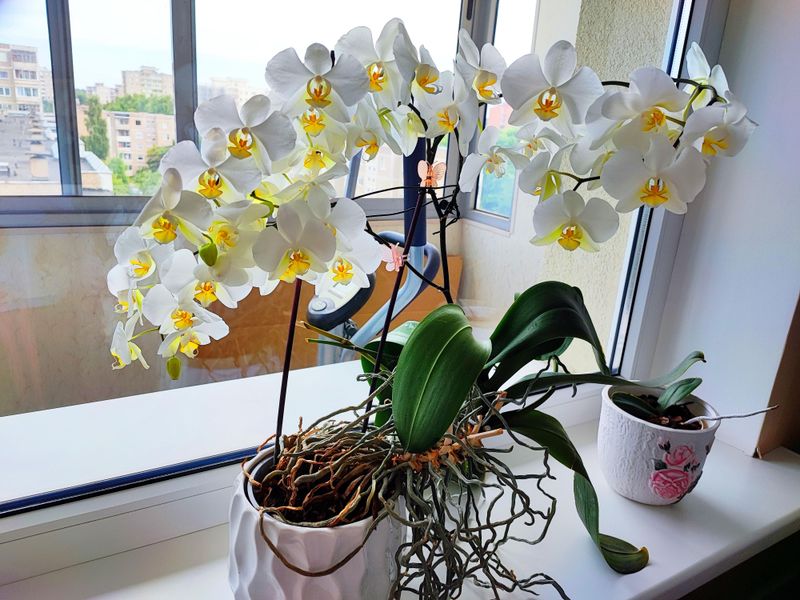Buying orchids can feel a bit tricky—I’ve definitely had moments where I wasn’t sure what to look for. These beautiful plants have a few secrets that can make all the difference between a thriving orchid and one that struggles.
Over time, I’ve learned the key things to spot when choosing orchids, along with some common pitfalls to skip. Trust me, a little know-how goes a long way in keeping these beauties happy.
Let’s make sure your next orchid is a stunning success from the start!
1. Root Health Reveals All
Healthy roots tell you more about an orchid’s condition than pretty flowers ever will. Look for plump, firm roots with green or silvery tips—these are actively growing and absorbing nutrients.
Brown, mushy roots signal rot, while papery, shriveled ones indicate dehydration. For orchids in clear pots, this inspection is easy. For others, gently lift the plant to peek at the root system before committing to purchase.
2. Leaf Condition Speaks Volumes
Vibrant, firm leaves are your best indicator of a well-cared-for orchid. They should be evenly colored without yellowing, spotting, or weird discoloration that might signal disease or pest problems.
Floppy or wrinkled leaves often indicate dehydration issues. Examine both sides of leaves for tiny bugs or suspicious spots. Remember that older bottom leaves naturally yellow and drop, but multiple yellow leaves throughout the plant is a warning sign.
3. Pseudobulb Inspection Is Crucial
For orchid varieties like Dendrobiums and Cattleyas, the pseudobulbs (swollen stem bases) should be firm and plump. Shriveled, wrinkled pseudobulbs indicate dehydration, while soft, mushy ones suggest rot.
Healthy pseudobulbs store water and nutrients for the plant. Black spots or unusual discoloration on pseudobulbs could signal fungal issues. Give them a gentle squeeze—they should feel solid like a firm grape, not squishy or hollow.
4. Flower Quality Matters Less Than You Think
Gorgeous blooms might catch your eye, but they’re temporary and tell you little about the plant’s long-term health. Many orchids are forced to bloom for sale, then struggle afterward.
Focus instead on the overall plant structure. Flowers should be free from browning edges or spots, but don’t choose solely based on bloom count. A plant with fewer flowers but excellent leaves and roots will reward you with better blooms in future cycles.
5. Growth Stage Considerations
Buying an orchid in full bloom gives instant gratification but shorter enjoyment at home as those flowers may only last a few more weeks. Consider purchasing plants with unopened buds for a longer display period.
Some enthusiasts prefer buying orchids with no flowers at all, focusing on healthy growth that will bloom later. These non-flowering plants are often cheaper and less stressed. New growth points—like flower spikes or leaf shoots—signal the plant is actively growing.
6. Potting Medium Condition
Fresh, chunky bark or specialized orchid mix should fill the pot—not decomposed, soggy material. Older, broken-down medium becomes compacted, suffocating roots and inviting rot problems.
Avoid orchids sitting in sphagnum moss that feels sopping wet, as this often leads to root rot. The ideal medium should be just slightly damp, never soaking. If you see fungi, mold, or a rotten smell coming from the pot, that’s a definite red flag.
7. Pest Examination Is Non-Negotiable
Never skip a thorough pest check before purchasing. Look under leaves and in leaf joints for scale insects (small brown bumps), mealybugs (white cotton-like clusters), or spider mites (tiny moving dots with webbing).
Sticky residue on leaves often indicates honeydew from sap-sucking pests. Bringing home just one infested orchid can spread problems to your entire collection. Use your phone’s flashlight to inspect dark crevices where pests hide during your store inspection.
8. Pot Size and Type Assessment
Many commercially sold orchids come in decorative pots with no drainage—a recipe for root rot. Check if there’s an inner plastic pot with holes that can be removed for proper watering.
Pot size matters tremendously. Overly large pots hold excess moisture, while too-small containers strangle roots. Most orchids prefer being slightly root-bound. Clear plastic pots are ideal as they allow photosynthesis in the roots and visual monitoring of root health and moisture levels.
9. Price-to-Value Ratio
Expensive doesn’t always mean better when it comes to orchids. Supermarket orchids for $15-20 can be perfectly healthy, while specialty nurseries charge premium prices for rare varieties or specimen-sized plants.
Consider what you’re paying for. Multiple flower spikes, unusual colors, or larger plant size might justify higher prices. Beware of artificially colored blue or purple Phalaenopsis orchids—these are white orchids injected with dye and will bloom white in future cycles.
10. Variety Suitability For Your Environment
Not all orchids thrive in the same conditions. Phalaenopsis (moth orchids) adapt well to typical home environments, making them perfect for beginners. Dendrobiums and Cattleyas need brighter light and humidity fluctuations.
Match the orchid type to your growing conditions. Low-light apartments call for Phalaenopsis or Paphiopedilums. Southern windows suit Vandas or Dendrobiums. Cool-growing Cymbidiums won’t thrive in consistently warm homes. Research specific needs before purchasing to avoid setting yourself up for failure.
11. Store Conditions As Quality Indicators
How a retailer displays and cares for their orchids reveals much about the plants’ health. Avoid purchasing from stores where orchids sit in standing water or direct sunlight, or where many plants show damage.
Quality retailers keep orchids in appropriate light, protected from drafts and temperature extremes. Staff knowledge matters too—if employees can’t answer basic care questions, the plants may have received improper care. Garden centers and specialty nurseries typically offer healthier specimens than big box stores.
12. Plant Tag Information Verification
Those little plastic tags provide crucial information about your orchid’s specific needs. Check that the tag matches the actual plant—mix-ups happen frequently in large retail environments.
Tags should indicate the orchid genus and ideally the specific hybrid or species. Beware of vague care instructions like “water weekly,” as orchid needs vary by season, home environment, and variety. Missing tags on specialty orchids should lower the price, as proper identification is essential for appropriate care.
13. New Growth Signs Are Promising
Active growth indicates an orchid is healthy and adapting well. Look for new leaf tips emerging from the crown, fresh root tips with green or reddish points, or developing flower spikes.
These growth indicators show the plant is putting energy into development, not just survival. For sympodial orchids like Cattleyas, new pseudobulbs or “eyes” beginning to swell are excellent signs. Plants displaying new growth will generally transition to your home environment more successfully.
14. Seasonal Buying Considerations
Timing your orchid purchase can affect its transition to your home. Extremely hot or cold days make transport risky—even a brief exposure to temperature extremes can shock or damage plants.
Many orchids naturally bloom in specific seasons. Spring purchases often align with natural growth cycles, giving plants maximum recovery time before winter dormancy. Ask retailers when their shipments arrive—newly delivered plants may be stressed from shipping and need time to acclimate before purchase.
15. Retailer Guarantee Policies
Before purchasing, ask about store guarantee policies. Some specialty nurseries offer 30-day guarantees on plant health, while most big box stores provide minimal assurances.
Keep your receipt and take dated photos of your orchid on purchase day. This documentation helps if health issues emerge shortly after buying. Reputable sellers stand behind their plants and will work with you if problems arise that weren’t apparent at purchase time.

